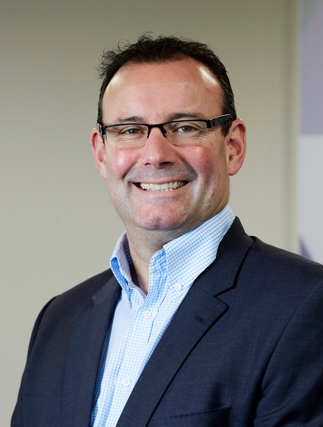
Building societies should collaborate on technology to improve efficiency, be more cost-effective, better target customers and achieve their growth plans.
Speaking on a panel at OMS Tech Talks, Rob Oliver (pictured), Dudley Building Society, said that there were a lot of lenders of a similar size who “want to grow” and have a “lot of aspirations to get to be a billion-pound lender”.
However, he said that the “big issue” from a building society perspective was that the systems in place “are not sufficiently efficient to actually drive that growth, and that is a huge problem for a lot of lenders our size”.
Oliver continued: “We’re capital-heavy because we have branch networks, we have a lot of savings within the society, but that doesn’t help you to grow. I think, from a building society perspective, we’ve got to try and work out what the future looks like in two years’ time, and we can’t do that on our own.”
He noted that a problem was building societies were “working in silos”, whereas they should be “doing it together rather than independently”.
Oliver said that customer habits were changing quickly, and for other kinds of financial services – for instance, getting a credit card – they could have an indication earlier on whether they would be accepted, but for building societies, a lending decision could take time.
“Customer habits are changing quickly, and we’re struggling to keep up as independent building societies, so from my perspective, we have to really collaborate more as societies who are [a] similar size to ourselves, just to make sure we’re still here in five years’ time,” he added.
Oliver said that the company, along with other similarly sized building societies, wanted to be a “billion-pound lender”, but the “key to doing that is to work collaboratively”, adding that if mutuals didn’t, “we’re going to be spending a lot of money that we don’t have and are not doing particularly well”.
Dale Jannels, OMS’ CEO, said that cost was a “major part” in building societies adopting technology, and collaboration could make adoption more cost-effective.
“If we can do one set-up cost for three or four building societies, for example, that’s going to be a lot more beneficial to them rather than having four different conversations and four different set-up costs,” he said.
Jannels noted that each mutual would have its own system and white labelled version, but collaborating and “doing it all in one go” would make technology adoption a “lot more cost-effective, and it should speed up the process”.
Do the ‘homework’ on technology
Jannels said that he was seeing a lot of “fear of missing out” with regard to technology, but it was important to do the research.
He explained that there was a lot of interest in who firms were partnering with and why, leading some to think that “if they’re going with them, then I should go with them”.
However, he said that companies may “not necessarily [be] doing the right homework” and there was a “huge amount of noise” in the marketplace around technology innovation.
Jannels said that it was crucial to do homework around a firm’s available resources, longevity, backing and funders to ensure it is a good fit.
“We’ve said right from day one if you want to come with us, go do your homework and speak to people that use this on a day-to-day basis and get some decent referrals, and that’s what we’re doing the same with lenders,” he explained.
OMS’ cloud-based customer relationship management (CRM) system, which was founded in 2017, was initially aimed at mortgage brokers, but the firm is now diversifying into lender originations, which Jannels described as a “whole different world”.
He noted that there was a “fear of change”, as firms have always done things in a certain way, but changing customer habits meant that change was inevitable.
“There is a new generation of person coming through [that is very technology-savvy] right now, that if you’re not catering for it, catering for them, they’re gone already before you even realise,” Jannels said.
He said that there were two generic types of people in the marketplace – one who was comfortable with open banking and full ID with a “click of a button”, and the other who was more paper-based – and it was important as a technology firm to cater for both.
If you are interested, read our previous story from OMS Tech Talks here.
Anna is currently the deputy editor for Mortgage Solutions and editor for Specialist Lending Solutions. She has worked as a journalist since 2019, having secured her Gold Standard NCTJ diploma from News Associates in a fast-track six-month course.
She started her career as a report at specialist publication The Insurance Insider covering a wide range of areas before joining Mortgage Solutions and Specialist Lending Solutions in 2021.
In her role, she helps put together and structure the news agenda for the day and writes up press releases, reports, interviews, analyses and exclusives across both titles. She also commissions blogs for Specialist Lending Solutions and hosts online masterclasses and in-person events across the business.
She has been shortlisted for three journalism awards, which include BIBA Journalist and Media Awards Scoop of Year Award in 2020, Headline Money Mortgage Journalist of the Year Award (B2B) in 2022 and 2023.
Prior to being a journalist, Anna worked in ecommerce across Snow + Rock, Cycle Surgery and Runners Need websites, and before that worked at specialist financial PR firm Rostrum.
In her spare time, Anna enjoys reading, seeing live music, and cooking for friends and family. When she gets a chance, she also enjoys hiking, skiing and indoor rock climbing.



